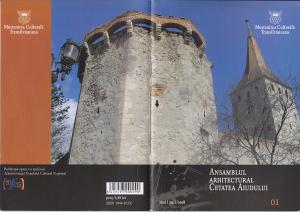The Architectural Ensemble of Aiud Fortress
|
Author(s)/Editor(s): EKE Zsuzsanna, Ioana RUS Year published: 2008 Page count: 32 Size: 12,5 x 17,5 cm Languages: Romanian ISSN 1844-833X Publisher: UTILITAS Sponsors: Administration of the Romanian National Cultural Fund Stock availability: In stock Sell Price: 3.49RON |
|
The Series Transylvanian Cultural Heritage was launched in 2008 with the purpose of dealing with some of the most important architectural historical ensembles from Transylvania, in order to draw the attention of everyone who gets into contact with the built heritage (researchers, specialists in designing and implementing rehabilitation works, owners and users of historic buildings) over these inestimable values.
The first issue of the Series Transylvanian Cultural Heritage presents the fortress and the Calvinist Church of Aiud, a historical settlement placed in the valley of Mureş river, which starting with the Middle Ages became one of the important commercial and trade centres of Transylvania. The first wooden fortification serving only the settlement's church was probably built in the 14th century. The building of the stone fortress was made between the 14th and the 16th centuries, when it received a series of towers and bastions placed in the care of the guilds. The Academicum Collegium, founded by prince Gábor Bethlen in Alba Iulia, was moved in 1662 to Aiud, which thus became the spiritual centre of the Transylvanian Calvinist Church. The present Calvinist church inside the Aiud fortress was built at the end of the 15th century, in Gothic style, in the place of an older church. Damaged several times, it was transformed in different stages, receiving a Baroque interior and some Neo-Gothic elements. The church tower is supposed to have initially been part of the fortification, being annexed to the church and heightened in the 15th century. The church hosted several reformed synods, on the occasion of the one in 1564, being adopted the separation of the Calvinist and Lutheran faiths.
